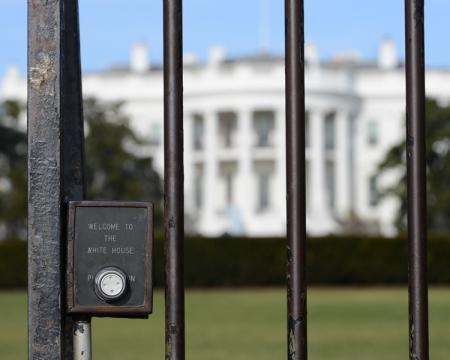Security teams must get better at catching intruders where we have the advantage: on our own networks.

The Russians spent a year inside the Democratic National Committee before they were discovered. It took five months for OPM to catch the thieves that stole the records of more than four million federal employees. Intruders broke into Yahoo’s systems in 2013, and we don’t even know how long they were inside; Yahoo only discovered the hack when stolen data turned up for sale on the dark web. We invest more and more in our security, but the breaches just get bigger. How many more times does this have to happen before we accept that what we’re doing isn’t working?
Earlier this month, during a Senate Armed Service Committee hearing, Admiral Michael S. Rogers, the director of the National Security Agency, told us what we need to do to fix the problem, recognizing two different kinds of cybersecurity:
Keeping intruders out of networks.
Identifying, containing, and ejecting them once they get inside.
We must be able to do both, Admiral Rogers argued, noting that there is an entirely “different thought process, methodology, prioritization, and risk approach to dealing with someone who is already in your network versus trying to keep them out in the first place.”
The head of the best offensive agency in the world is telling us exactly what we’re missing, but we aren’t listening. Most organizations still focus heavily on keeping attackers out, rather than trying to catch the ones that get in.
A common bit of security wisdom is that hackers have the advantage because they only need to be right once to get in. This is largely true today - hackers can launch assault after assault to try to break through your defenses, probing for a weakness until you slip. And every security team, no matter how good, slips up eventually. But once inside, the intruders are in your network - unfriendly territory. They have to hide inside your environment, and they only have to slip up once to get caught.
Consider the White House, one of the most secure buildings on the planet. Jumping the wrought iron fence on Pennsylvania Avenue isn’t the challenge. The challenge is dealing with the Secret Service agents that tackle you as soon as your feet hit the lawn. Cybersecurity teams should play to our strengths, and follow the example of both Admiral Rogers and the Secret Service. We should always work to keep intruders out, but some will always get in. We should heavily invest where we have the advantage: on our own networks.
At the White House, it is the Secret Service’s visibility and control inside the grounds that shuts down intruders. Crossing that lawn is exposed, and the Secret Service detects intruders in seconds. Access within the compound is limited to only where you need to go for purposes of your meeting, so visitors that step out of bounds are easy to spot. And once an intruder is detected, there is almost always an agent nearby, with a wide range of tools at their disposal to contain the intrusion. This is the essence of the defender’s advantage: visibility linked with control means that intruders are at a huge disadvantage once they get in.
Unfortunately, we have largely ceded this advantage on our networks. Security teams often don’t know what devices are connected, or how those devices are talking to each other. This offers an incredible opportunity for intruders, because by understanding our networks better than we do, they can operate at their strongest when they should be at their weakest.
If we are going to take Admiral Rogers’ advice, this is what we must correct. There are emerging technologies that could help us correct this imbalance. Organizations need real-time visibility into how their devices are communicating so they can identify intruders quickly. We should limit access to important systems; segment networks and important data; patch vulnerable systems; encrypt data. Each of these steps increases visibility and control. They enable organizations to quickly identify intruders, act to constrain their movements, and eject them from the network. None of these tools are rocket science, but they require that we focus not just on keeping intruders out, but on catching them when they get in.
This reality makes Admiral Rogers’ comments during the Senate hearing all the more poignant. If there are two types of cybersecurity, why have we invested so heavily in the one where we are at a disadvantage, and given up the advantage we hold for the other?
Related Content:
About the Author(s)
You May Also Like
The fuel in the new AI race: Data
April 23, 2024Securing Code in the Age of AI
April 24, 2024Beyond Spam Filters and Firewalls: Preventing Business Email Compromises in the Modern Enterprise
April 30, 2024Key Findings from the State of AppSec Report 2024
May 7, 2024Is AI Identifying Threats to Your Network?
May 14, 2024
Black Hat USA - August 3-8 - Learn More
August 3, 2024Cybersecurity's Hottest New Technologies: What You Need To Know
March 21, 2024




